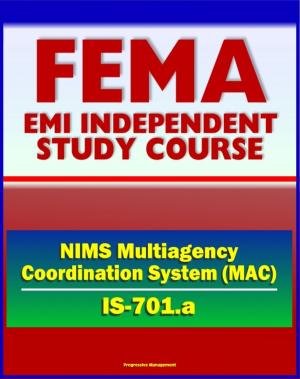National Defense Intelligence College Paper: Can't We All Just Get Along? Improving the Law Enforcement-Intelligence Community Relationship, FBI and CIA
Nonfiction, History, Military, Strategy, Social & Cultural Studies, Political Science| Author: | Progressive Management | ISBN: | 9781310758478 |
| Publisher: | Progressive Management | Publication: | January 27, 2014 |
| Imprint: | Smashwords Edition | Language: | English |
| Author: | Progressive Management |
| ISBN: | 9781310758478 |
| Publisher: | Progressive Management |
| Publication: | January 27, 2014 |
| Imprint: | Smashwords Edition |
| Language: | English |
This unique and informative paper was produced by the National Intelligence University / National Defense Intelligence College. Topics and subjects include: HUMINT (human intelligence), FBI-CIA turf battles, anti-gang techniques, telephone record analysis, link analysis, DEA, 9/11 attacks, home-grown Islamic extremists, prison gangs, Aryan brotherhood, Black Guerrilla family, Mexican mafia, Neustra Familia, street gangs, predictive intelligence, information sharing, national security and intelligence, Irish War of Independence (1919-1921), intelligence technology, Operation Hound Dog, Haiti, Bosnia, Somalia, analytical tools, interrogation, counterterrorism, Gilmore commission, state Homeland Security advisors, FIGs (Field Intelligence Groups).
Intelligence—vital information about persons and phenomena that would do us harm—has been used to great effect by the Law Enforcement community for many years to support operations and ensure public safety. Human source development tradecraft, technical collection techniques, analytic methodologies and tools, and information sharing policies and systems have been a mainstay of law enforcement operations for many years. Globalization and the decline of the nation state have given rise to new adversaries, many of which resemble shadowy criminal-like networks that use technology to operate across national boundaries and threaten both national security and public safety. Can't We All Just Get Along? Improving the Law Enforcement-Intelligence Community Relationship is a powerful and thoughtful compendium that explores law enforcement intelligence techniques and their utility for the National Intelligence Community, as well as proven Intelligence Community methodologies and their potential application for law enforcement intelligence operations. Most importantly, the compendium eloquently reminds us that it is the "soft stuff"—culture, training, trust—that presents the greatest challenge to achieving a partnership between Law Enforcement and the Intelligence Community that the threat demands and our citizens deserve.
Much has been said about Law Enforcement not "getting" intelligence and about the Intelligence Community not "getting" law enforcement operations. Those of us who have had the privilege of serving in both communities know from experience that neither assertion is true and have urged a thoughtful analysis of facts to tamp down the emotion that surrounds this debate. This work succeeds in moving us beyond surface judgments and emotions, exploring law enforcement intelligence tools and techniques in some depth and pointing to their utility in fighting and prevailing over today's adversaries. Just as importantly, it points to extant Intelligence Community practices that if applied broadly will help Law Enforcement make the transition from prosecution to prevention.
This unique and informative paper was produced by the National Intelligence University / National Defense Intelligence College. Topics and subjects include: HUMINT (human intelligence), FBI-CIA turf battles, anti-gang techniques, telephone record analysis, link analysis, DEA, 9/11 attacks, home-grown Islamic extremists, prison gangs, Aryan brotherhood, Black Guerrilla family, Mexican mafia, Neustra Familia, street gangs, predictive intelligence, information sharing, national security and intelligence, Irish War of Independence (1919-1921), intelligence technology, Operation Hound Dog, Haiti, Bosnia, Somalia, analytical tools, interrogation, counterterrorism, Gilmore commission, state Homeland Security advisors, FIGs (Field Intelligence Groups).
Intelligence—vital information about persons and phenomena that would do us harm—has been used to great effect by the Law Enforcement community for many years to support operations and ensure public safety. Human source development tradecraft, technical collection techniques, analytic methodologies and tools, and information sharing policies and systems have been a mainstay of law enforcement operations for many years. Globalization and the decline of the nation state have given rise to new adversaries, many of which resemble shadowy criminal-like networks that use technology to operate across national boundaries and threaten both national security and public safety. Can't We All Just Get Along? Improving the Law Enforcement-Intelligence Community Relationship is a powerful and thoughtful compendium that explores law enforcement intelligence techniques and their utility for the National Intelligence Community, as well as proven Intelligence Community methodologies and their potential application for law enforcement intelligence operations. Most importantly, the compendium eloquently reminds us that it is the "soft stuff"—culture, training, trust—that presents the greatest challenge to achieving a partnership between Law Enforcement and the Intelligence Community that the threat demands and our citizens deserve.
Much has been said about Law Enforcement not "getting" intelligence and about the Intelligence Community not "getting" law enforcement operations. Those of us who have had the privilege of serving in both communities know from experience that neither assertion is true and have urged a thoughtful analysis of facts to tamp down the emotion that surrounds this debate. This work succeeds in moving us beyond surface judgments and emotions, exploring law enforcement intelligence tools and techniques in some depth and pointing to their utility in fighting and prevailing over today's adversaries. Just as importantly, it points to extant Intelligence Community practices that if applied broadly will help Law Enforcement make the transition from prosecution to prevention.















